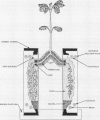Abstract
Soybean (Glycine max [L.] Merr. cv Davis) was grown in a split-root growth system designed to maintain control of the root atmosphere. Two experiments were conducted to examine how 80% Ar:20% O2 (Ar:O2) and air (Air) atmospheres affected N assimilation (NH4NO3 and N2 fixation) and the partitioning of photosynthate to roots and nodules. Application of NH4NO3 to nonnodulated half-root systems enhanced root growth and root respiration at the site of application. A second experiment applied Ar:O2 or air to the two sides of nodulated soybean half-root systems for 11 days in the following combinations: (a) Air to both sides (Air/Air); (b) Air to one side, Ar:O2 to the other (Air/Ar:O2), and (c) Ar:O2 to both sides (Ar:O2/Ar:O2). Results indicated that dry matter and current photosynthate (14C) were selectively partitioned to nodules and roots where N2 was available. Both root and nodule growth on the Air side of Air/Ar:O2 plants was significantly greater than the Ar:O2 side. The relative partitioning of carbon and current photosynthate between roots and nodules on a half-root system was also affected by N2 availability. The Ar:O2 sides partitioned relatively more current photosynthate to roots (57%) than nodules (43%), while N2-fixing root systems partitioned 36 and 64% of the carbon to roots and nodules, respectively. The Ar:O2 atmosphere decreased root and nodule respiration by 80% and nitrogenase activity by 85% compared to half-root systems in Air while specific nitrogenase activity of nodules in Ar:O2 was 50% of nodules supplied Air. Results indicated that nitrogen assimilation, whether from N2 fixation or inorganic sources, had a localized effect on root development. Nodule development accounted for the major decrease in total photosynthate partitioning to non-N2-fixing nodules. Soybean compensates for ineffective nodulation by controlling the flux of carbon to ineffective nodules and their associated roots.
Full text
PDF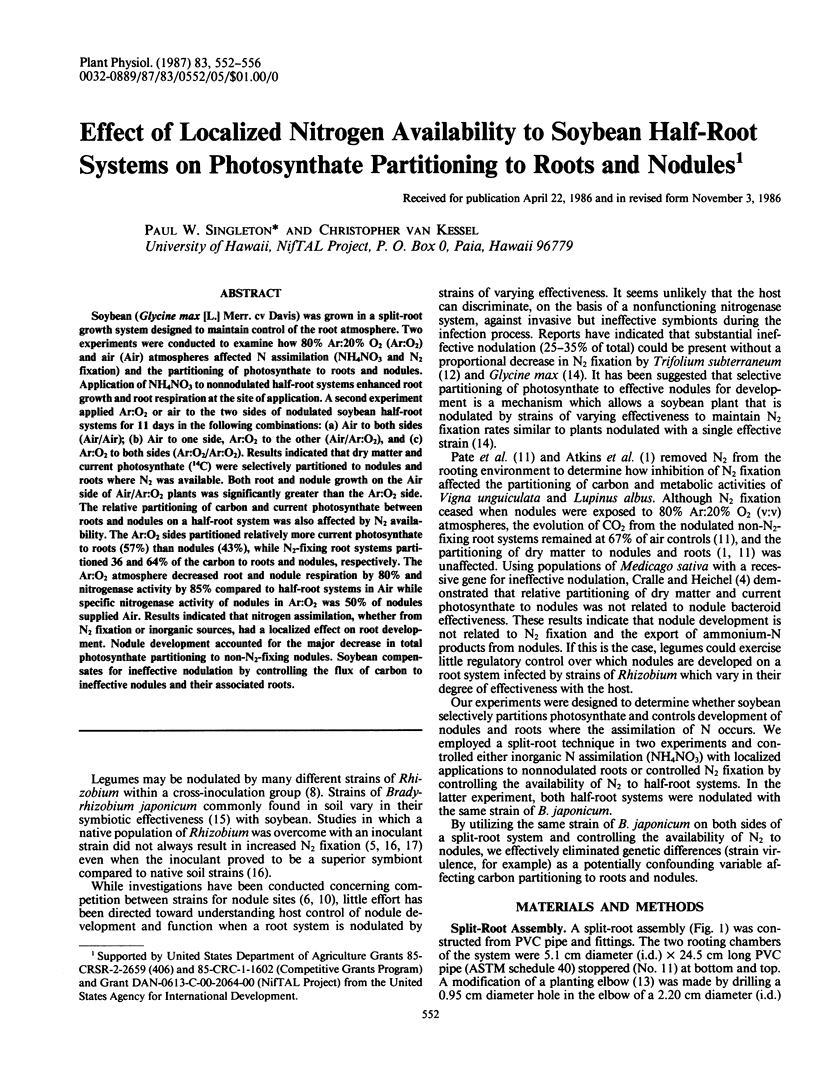
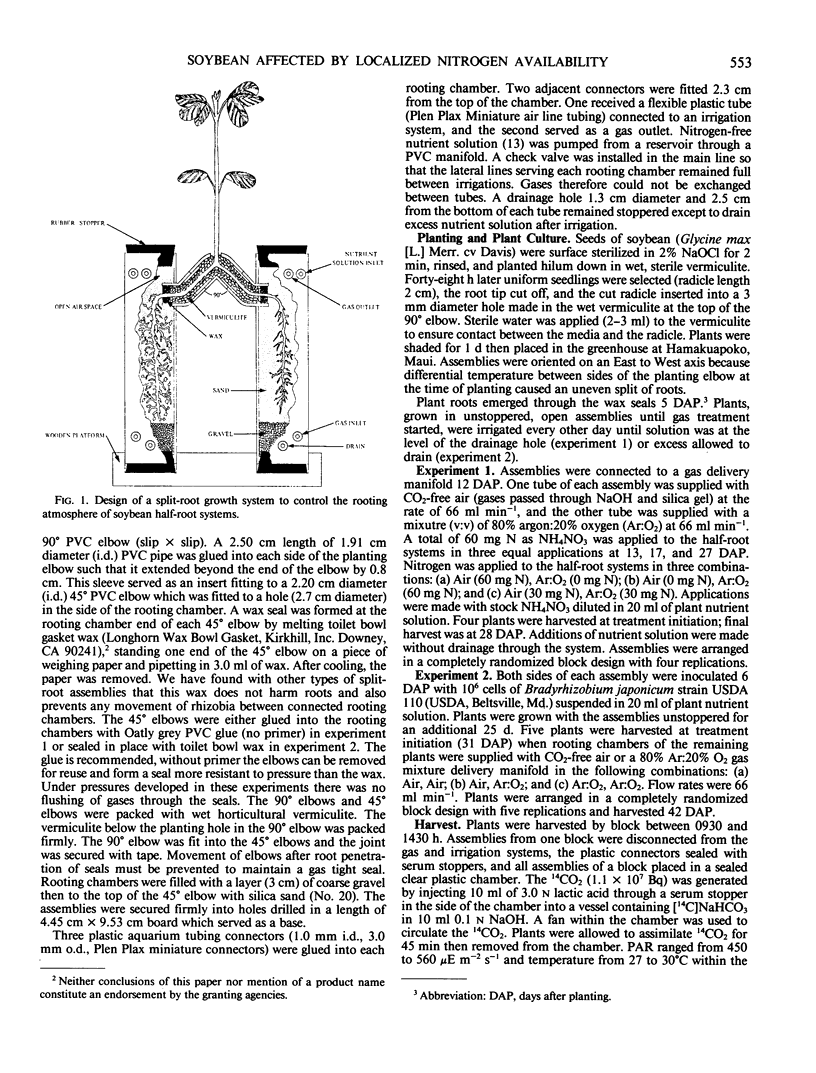
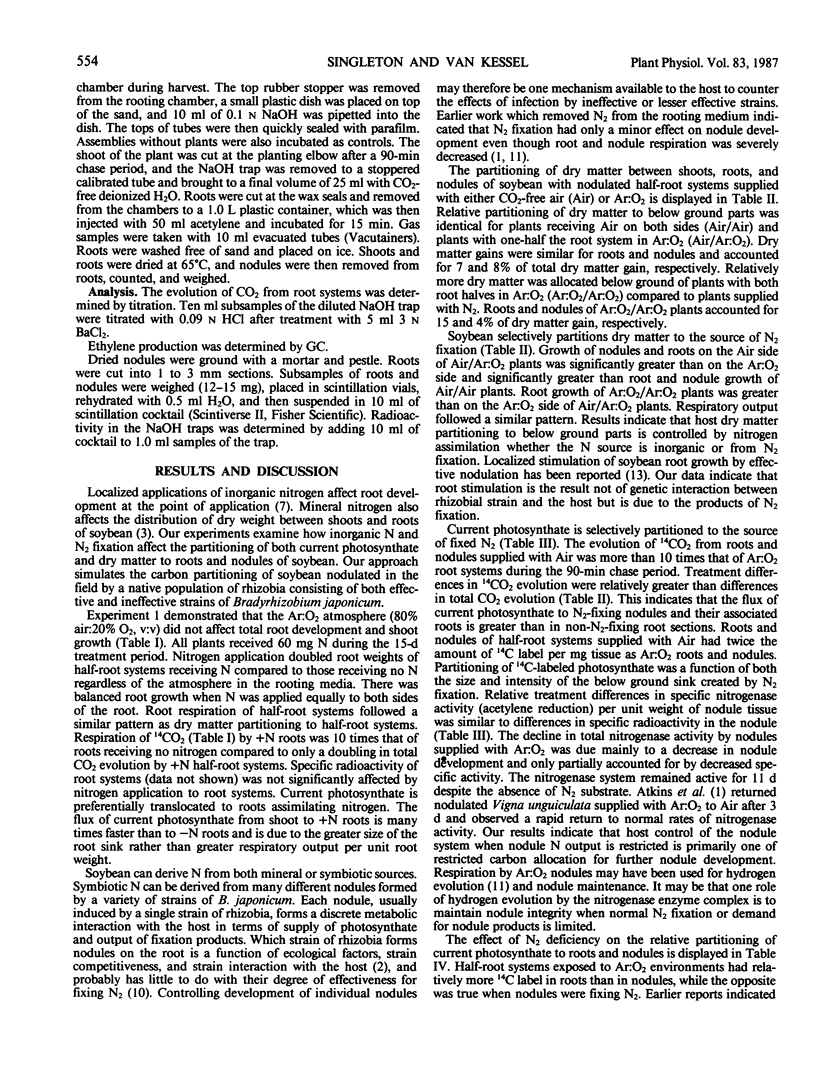
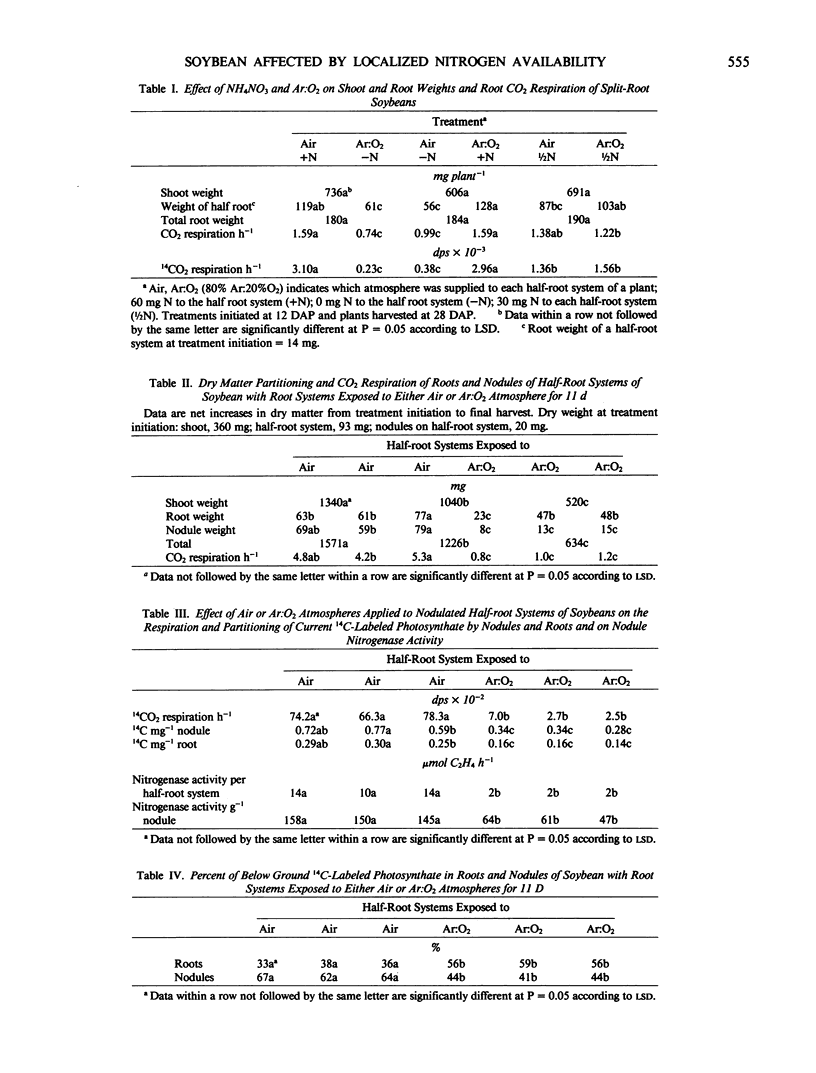
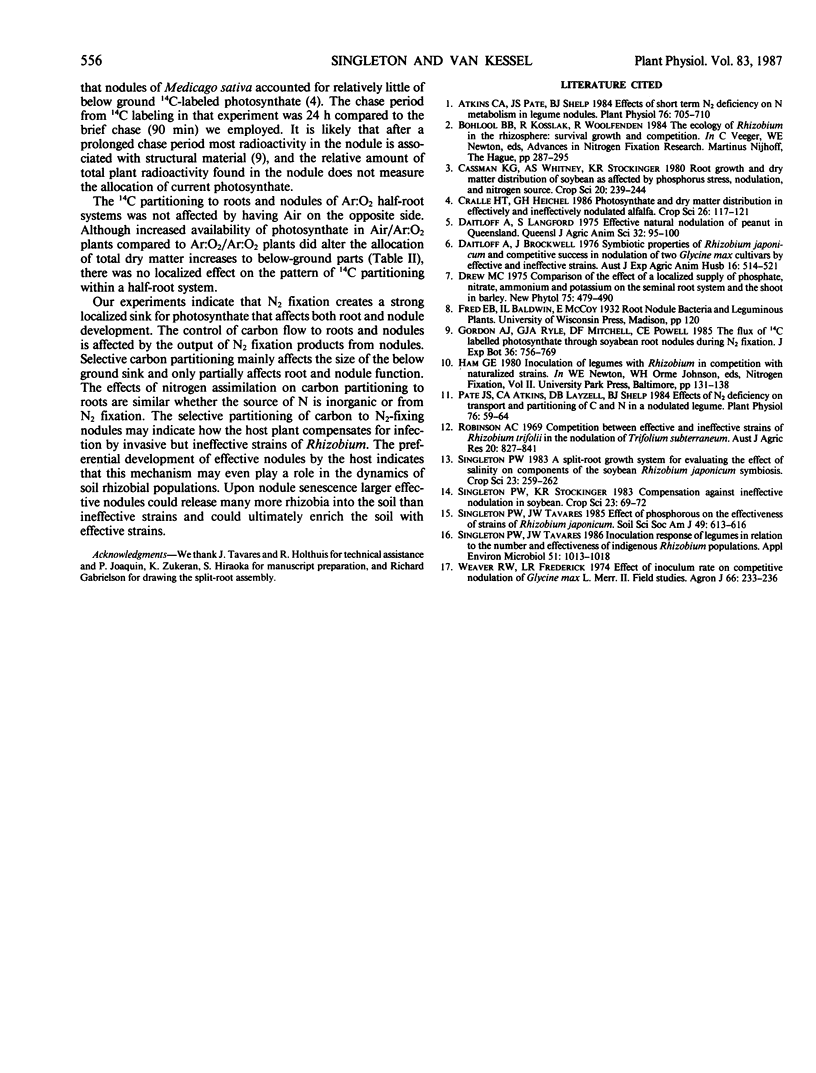
Images in this article
Selected References
These references are in PubMed. This may not be the complete list of references from this article.
- Atkins C. A., Pate J. S., Shelp B. J. Effects of short-term n(2) deficiency on N metabolism in legume nodules. Plant Physiol. 1984 Nov;76(3):705–710. doi: 10.1104/pp.76.3.705. [DOI] [PMC free article] [PubMed] [Google Scholar]
- Lang F., Quehenberger P., Greger R., Silbernagl S., Stockinger P. Evidence for a bicarbonate leak in the proximal tubule of the rat kidney. Pflugers Arch. 1980 Aug;386(3):239–244. doi: 10.1007/BF00587474. [DOI] [PubMed] [Google Scholar]
- Pate J. S., Atkins C. A., Layzell D. B., Shelp B. J. Effects of n(2) deficiency on transport and partitioning of C and N in a nodulated legume. Plant Physiol. 1984 Sep;76(1):59–64. doi: 10.1104/pp.76.1.59. [DOI] [PMC free article] [PubMed] [Google Scholar]
- Singleton P. W., Tavares J. W. Inoculation response of legumes in relation to the number and effectiveness of indigenous Rhizobium populations. Appl Environ Microbiol. 1986 May;51(5):1013–1018. doi: 10.1128/aem.51.5.1013-1018.1986. [DOI] [PMC free article] [PubMed] [Google Scholar]



